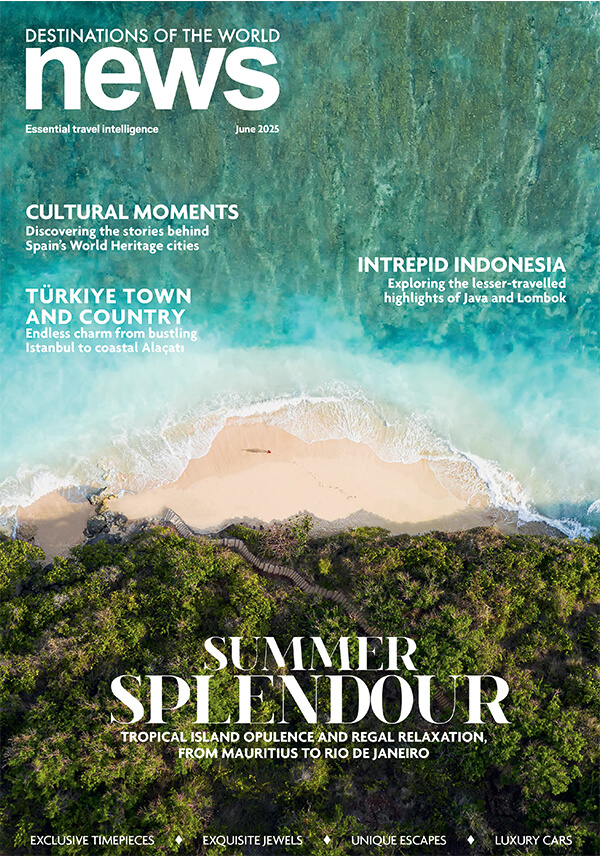‘Authentic travel’ is a buzzword often lobbied about the travel industry. It’s apparently what consumers want – or at least, we think we do. After all, there’s nothing that gets your Instagram flooding with hearts like a selfie set against some remote, jaw-dropping scenery. Most people just want easy access to air conditioning and a comfy bed afterwards.
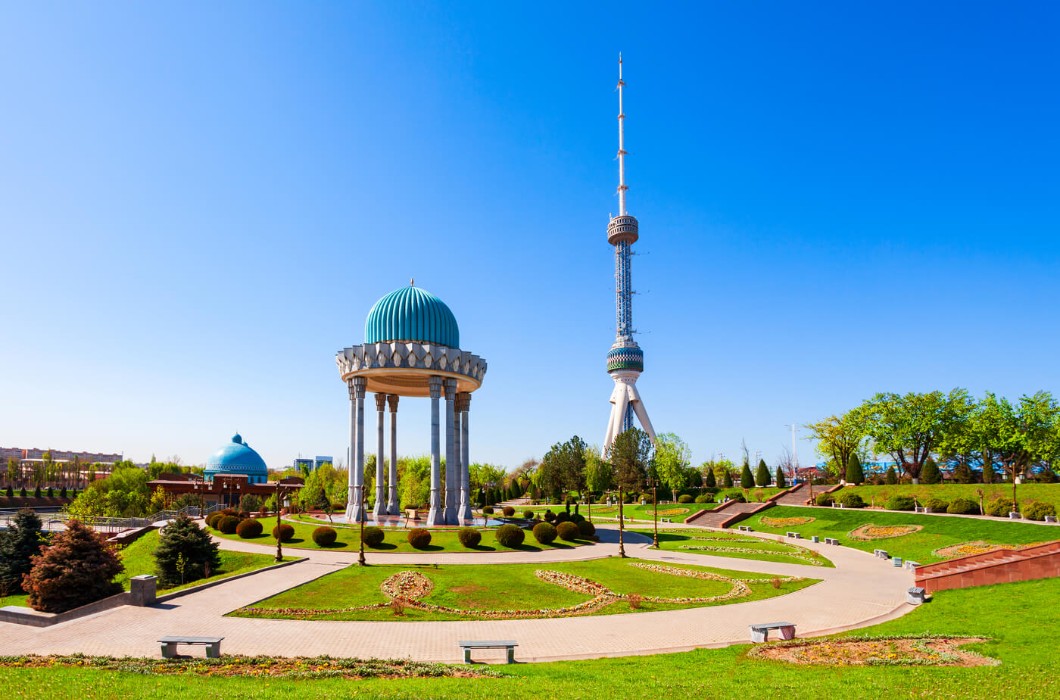
The truth is, authentic travel is sometimes arduous, uncomfortable and exhausting. Visiting destinations where tourist infrastructure is still nascent, and where the sightseeing attractions really are smack bang in the middle of nowhere, presents its challenges to those who are perhaps curious but naive. These were some of thoughts running through my brain as I was driving eight hours across the desert to a yurt camp in eastern Uzbekistan, nursing a sinus infection and with phone signal connection a distant memory. Nothing worth having comes easy, after all.
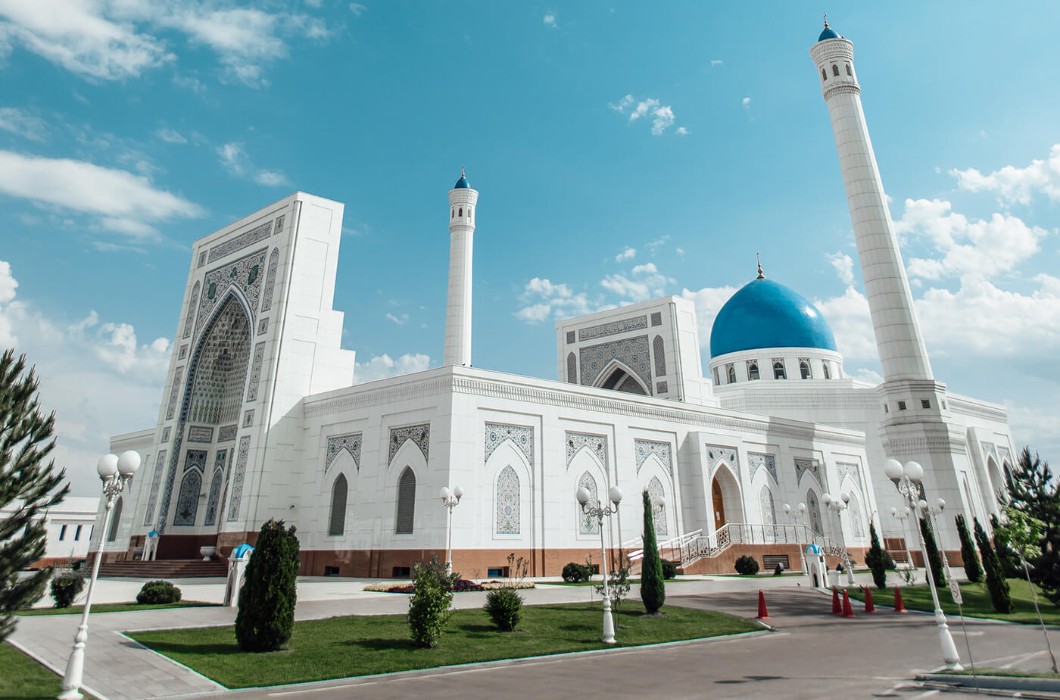
Once closed off to tourists, Uzbekistan is slowly welcoming more and more visitors. After the government reformed in February 2021, the President allocated $100 million for tourism infrastructure development, attracting dozens of global hotel brands. Its capital Tashkent is the first port of call for visitors to the country, who usually transit through Istanbul. Tashkent is one of the oldest cities on the Great Silk Road between China and Europe, and is known for its stunning mosques and Islamic architecture: here commenced what proved to be a trip of two distinct halves, beginning with a subway journey like no other.
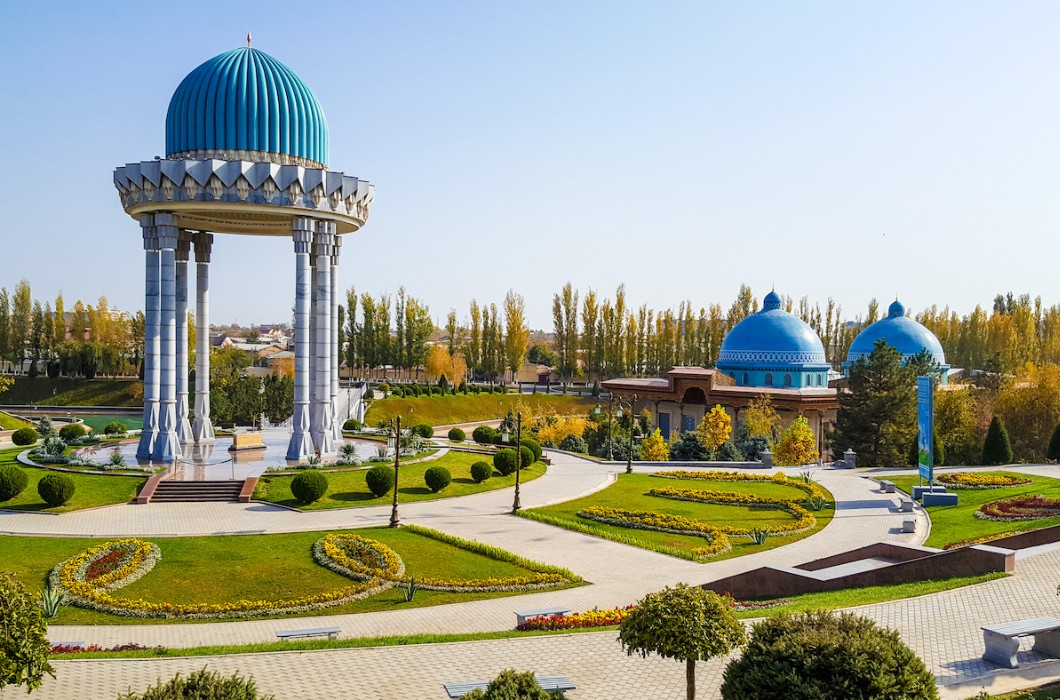
It isn’t many countries where your first destination is to visit the metro, and not even particularly to ride it – but to see the stations themselves. In fact, it was forbidden for tourists to take photographs until 2018, a sensitivity due to their secondary function as nuclear bomb shelters.
Comprised of three lines and 29 stops, the whole metro network of the Uzbek capital is a paean to the country’s history. Each station is architecturally unique from the others: Kosmonavtlar, translating as ‘cosmonaut’, honours the space race between the Soviet Union and the United States. As if seen through space shuttle portholes, midnight-blue portraits of Soviet pilots and cosmonauts Yuri Gargarin, Diani Bekov and Valentina Telechkova line the tunnel walls. Forget your boring old commute at home – this is like wandering through a dream.
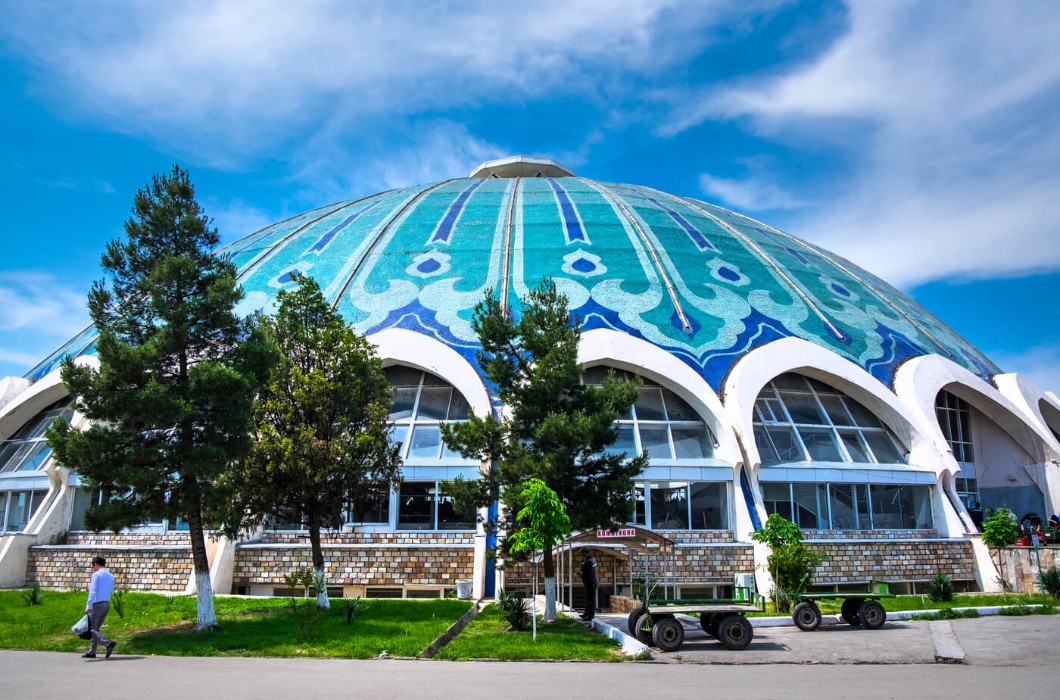
Uzbekistan’s capital Tashkent is the first port of call for visitors to the country - one of the oldest cities on the Great Silk Road between China and Europe
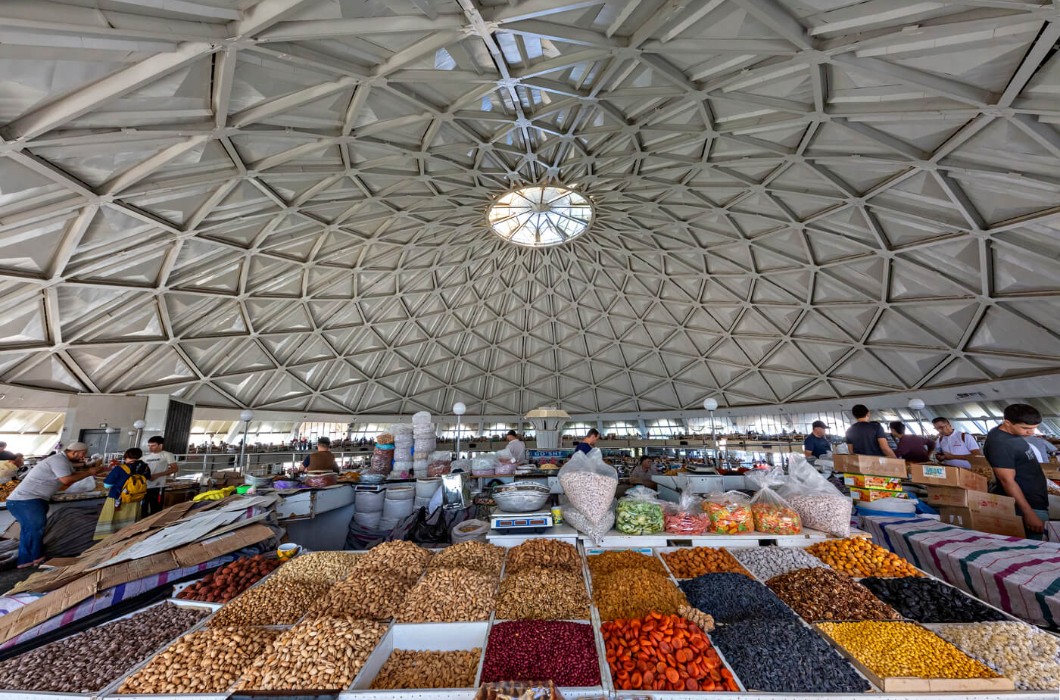
Approaching Chorsu Market, the hubbub of market life is signposted by open car boots filled with cauliflowers and roofs laden with onions. Each city has its own domed bazaar where the main activity is set, and the enormous mosaic tiled carapace is quite a sight. Inside, hawkers present nuts, dried fruits and pickled vegetables piled high; the meat section, a kind of abattoir-cum-torture chamber with flayed horse heads and intestines strung up on rusty hooks, isn’t for the faint-hearted, and perhaps is enough to turn the most convicted of carnivores into vegetarians.
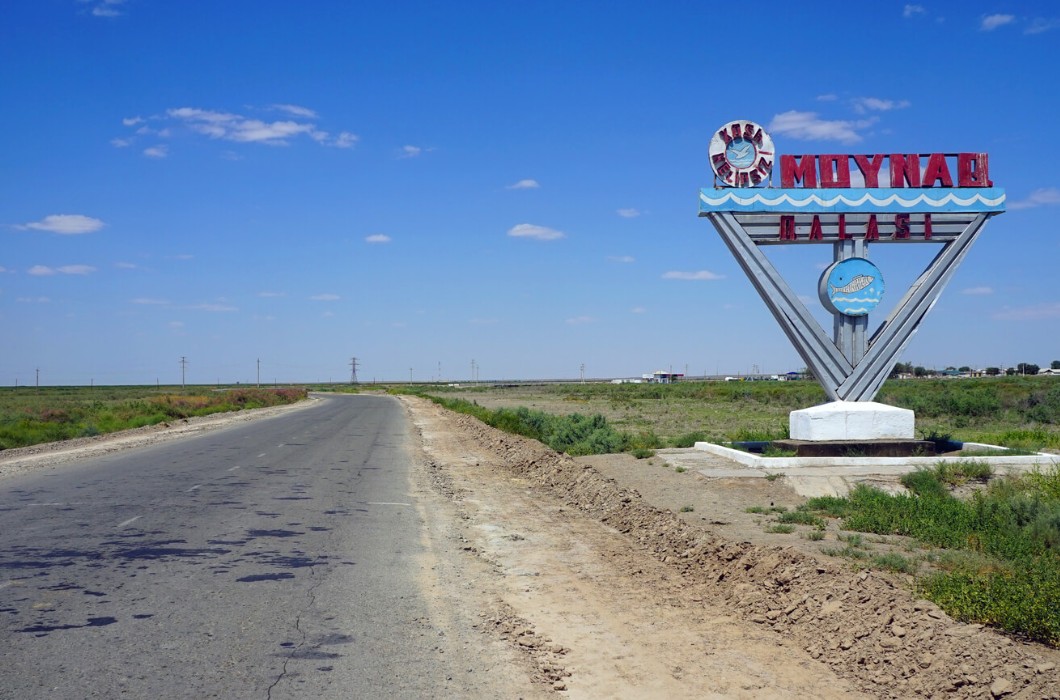
Thanks to its incredibly fertile wheat fields, Uzbekistan was the former breadbasket for the Soviet Union – and so it makes sense that the market’s bakery draws the crowds. The bakers are happy to help visitors try shovelling dough into their ovens, although be warned, they almost get right inside and you with them. Meanwhile the relaxed canteen was a good spot to take a break from the heat in the shade and try pilof, the traditional rice dish cooked with peppers, chickpeas, beef.
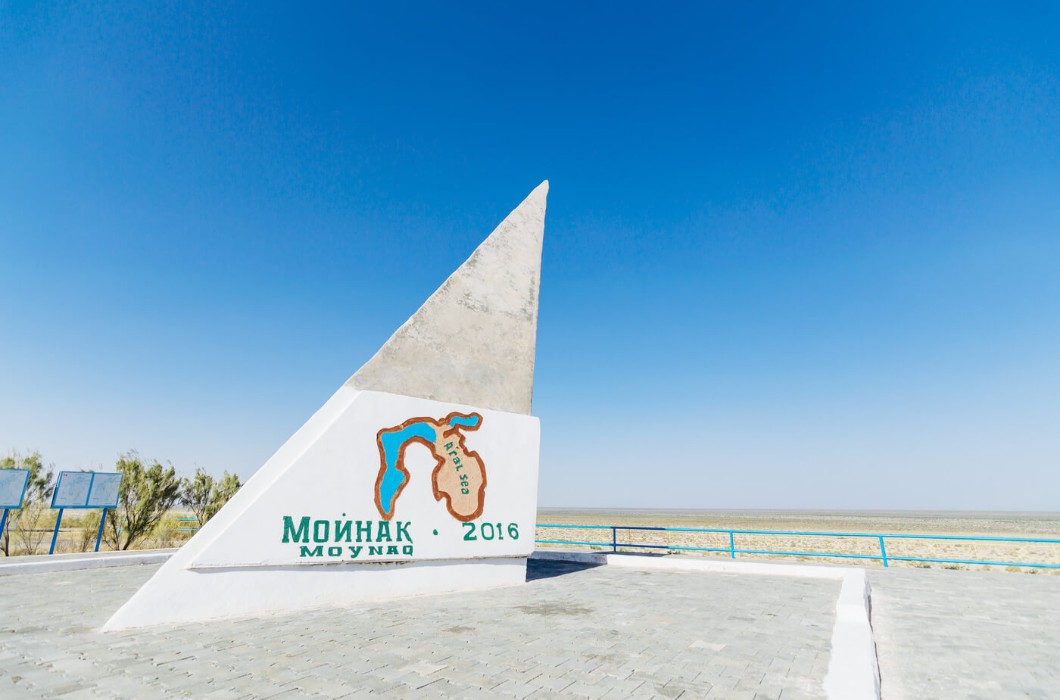
Many tourists find themselves stuffing their suitcases with the beautifully patterned ceramics, Most of these bowls, plates, cups and vases are cheaply mass-produced and with prices to match. However, Uzbekistan is well-regarded for its ceramics – so if you’re looking for a fine example of the country’s craft, Rakhimov’s workshop and gallery shows the fruits of four generations of ceramics masters who have seen their works exhibited at the Venice Biennele. The studio, centred around a verdant courtyard, is incredibly peaceful and meditative, and it’s possible to have a go painting yourself.
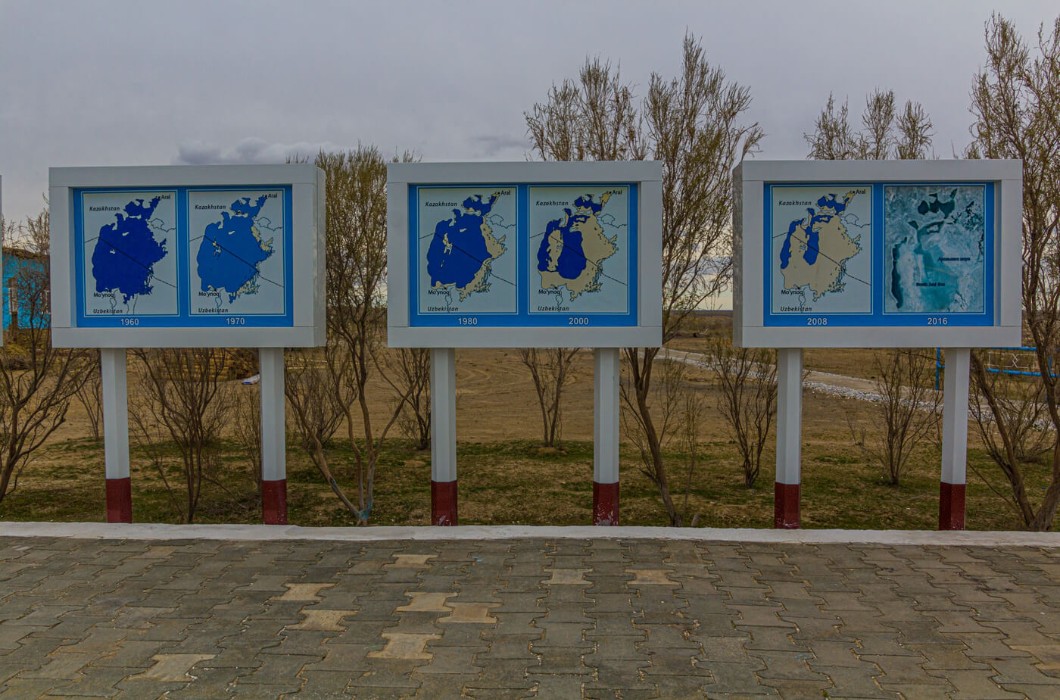
Departing Tashkent for the Aral Sea, we are about to encounter a different, more troubling kind of silence. The trip requires an internal flight to the city of Nukus, followed by the aforementioned long drive into the desert – broken up by a lunch of borsch and bread at a local guest house – navigating endless bumps and potholes that add hours onto the journey.
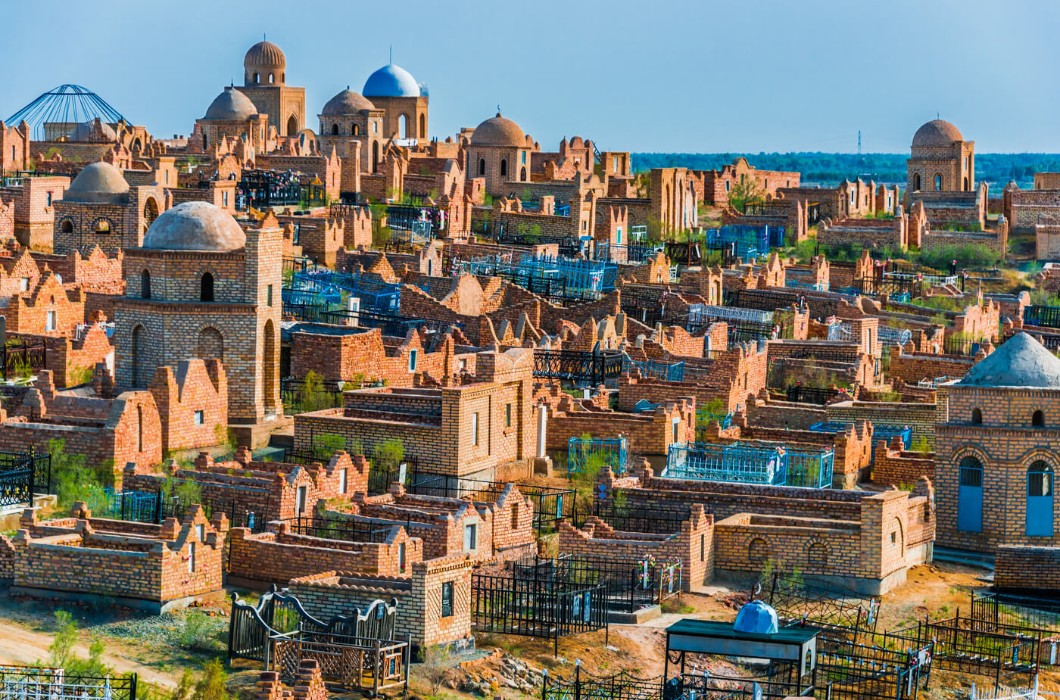
Near the border of Kazakstan, Russian and Kazak influences are stronger in this region, which is named Karakalpakstan. This autonomous republic in the northwest of Uzbekistan was once populated by nomadic tribes, many of whom travelled up and down the Silk Road trading fish, spices and materials. The ‘sea’ was the site of a thriving fishing port, but is actually a misnomer, as it was once the fourth largest inland lake in the world – now shrunk by more than 90 per cent due to cotton farming by the Soviet Union. Not simply bread, the Soviets designated Uzbekistan as the cotton providers, and water was diverted from the Aral lake to fuel production. The receding ‘sea waters’ became one of the greatest ecological catastrophes. Scientists calculated that if they tried to restore the Aral Sea via the rivers it would take 200 years.
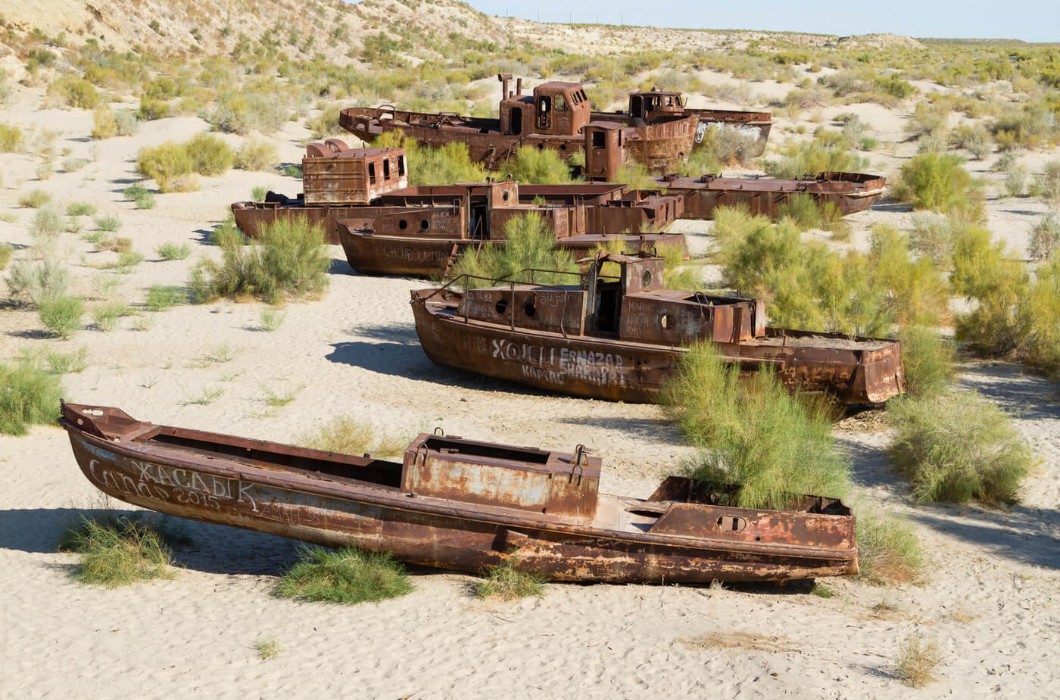
The impact was human as well as environmental. Our guide Mahmoud described how his school was closed during picking season so he could work in the fields, earning enough money in a month to buy perhaps some cigarettes or toothpaste. However, an international boycott was finally lifted in 2022 after Uzbekistan was able to prove that forced labour was no longer employed. A region that once supplied 45,000 tonnes of fish a year, the only export today is tiny brine shrimp whose eggs are scooped up off the surface of the water to be used as food for farmed fish in aquariums.
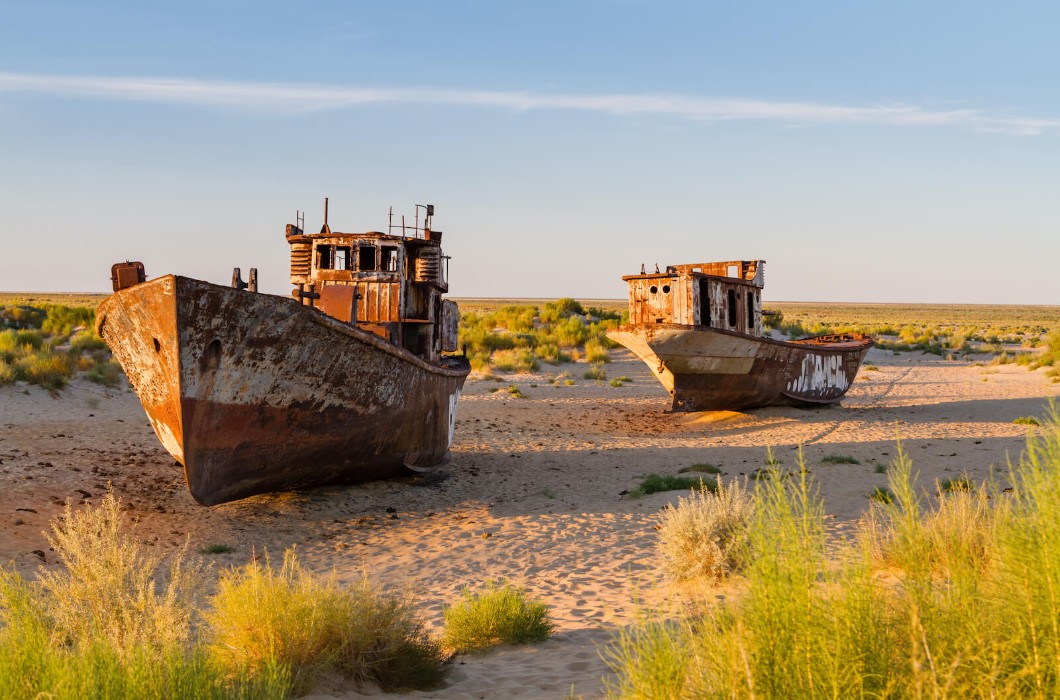
So, the truth is, this isn’t simply authentic travel – it’s disaster tourism, the act of visiting a location subject to man-made catastrophe. The nearby town of Moynaq – what Mahmoud refers to as ‘the decorated street’ – is eerily empty, with new and colourful buildings erected in an effort to attract tourism, making it resemble an abandoned theme park. A local museum features propaganda movies made to show international funds poured into region have been well spent.
Today it is possible to stay in a small, family-run yurt camp not far from the shoreline, where the scenery is what you might describe as depressingly beautiful
Today it is possible to stay in a small, family-run yurt camp not far from the shoreline, where the scenery is what you might describe as depressingly beautiful. Climb up to what the guides call ‘the dating bench’ – a roughly hewn seat at the top of a dune – and the desert goes on for as far as the eye can see, with the beautiful, alien-like rock formations of the Ustyurt Plateau.
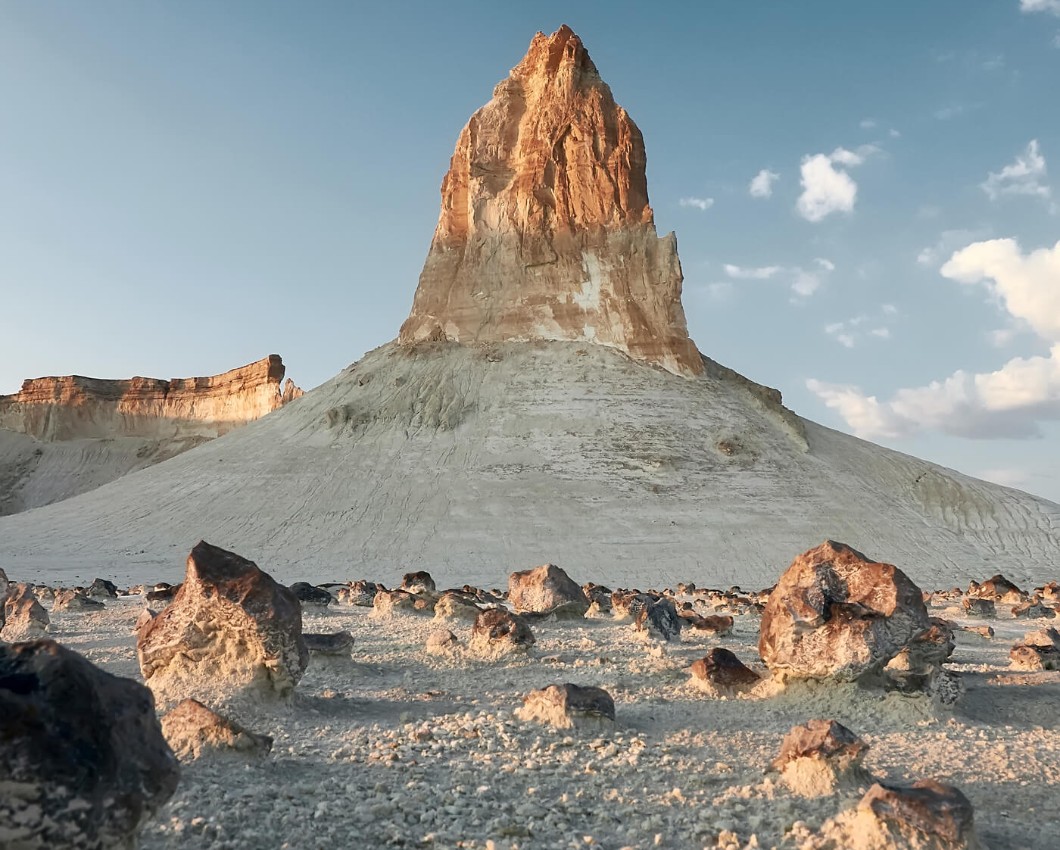
Over the course of the next three days, we are taken to the disaster ‘highlights’: a graveyard of rusted ships forever run aground and abandoned by their owners; a lone apple tree, planted by Soviet soldiers and diligently watered, still survives to this day; 13th-century settlements that effectively functioned as motels for travellers on the Silk Road. And not forgetting the loneliest beach on the earth, where tourists can take a dip in grey waters with unprecedented salinity levels. Only Sudochie Lake feels verdant, filled with striking, lilypad-like reed islands. Nearby, another natural feature is the salt flats, which have always been there, in the searing heat. It feels like a place long forgotten, strewn with prehistoric shark teeth that are possible collect if you look hard enough.
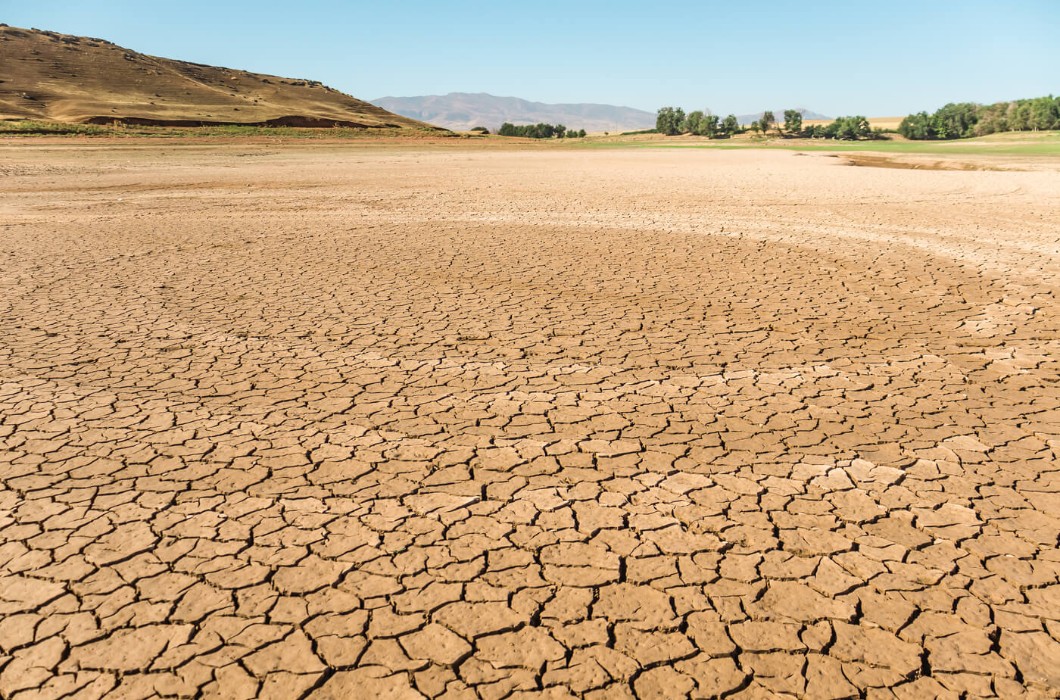
As stories are relayed to us over our journey, sometimes fact bleeds into fiction – such is the fear that the area inspires due to its grisly history. ‘Aral’ means ‘islands’, as there was once more than a thousand islands here. Barsa-Kelmes, known as the Bermuda Triangle of Central Asia and translating as ‘the land of no return’, was the subject of persistent stories about paranormal phenomena – from visitors who returned a month later having aged decades, or else been abducted by a prehistoric flying lizard. Meanwhile Vozrozhdeniya Island’s reputation has helped make it the fantasy setting for various action-packed video games.
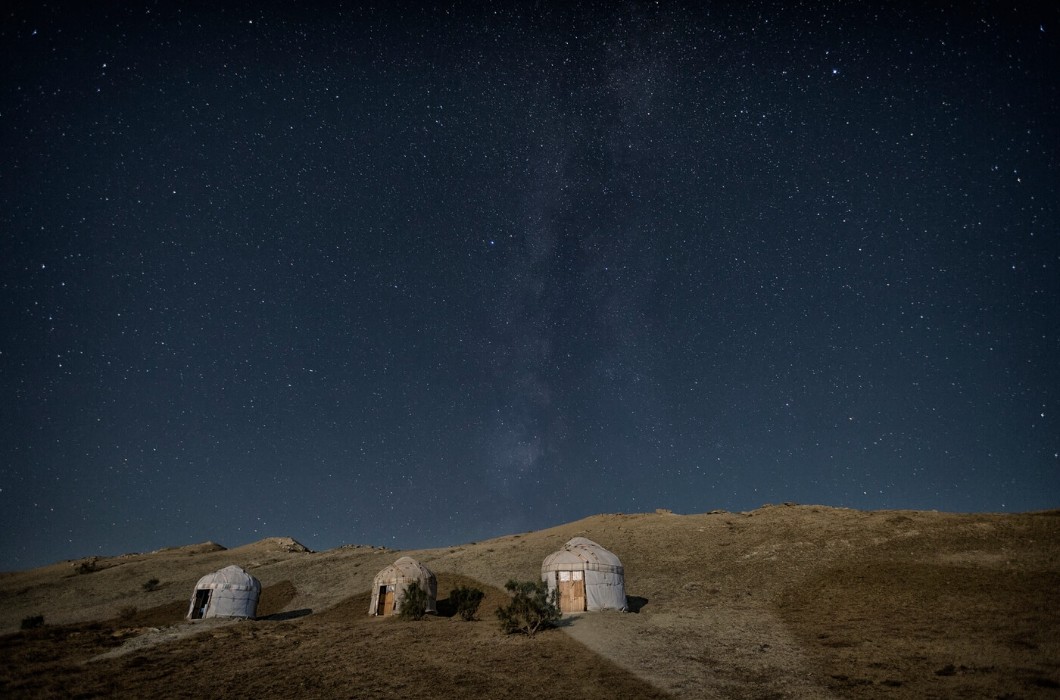
The camp accommodation is basic, but much pride taken in looking after guests, all of whom arrive exhausted. Glass bowls festooned with cherries and tangerines; while eggs and frankfurters appear at breakfast, and dinner is a hearty bowl of laghman, a hot soup filled with thick noodles, meat, vegetables, and coarse cumin. The yurts themselves are made from eight beams – cut from local wood – tied together, and draped with cowskin, kept warm at night by a wood-burning stove. These are small but welcome comforts against the very harsh elements that stretch out for miles around us.
Upon arrival back in Nukus, many go on to visit Uzbekistan’s other historic cities, Samarkan and Bukhara. It is of course possible to travel most of the country unaccompanied although you will need a guide to explore the Aral Sea. Our tour package was arranged with Minzifa Travel (minzifatravel.com) who ensured we found our way back to civilisation – perhaps better described as the world of the living. After all, the Aral Sea is a place for which the death knell rung very long ago, now with the only signs of life being the tourists who come to see its ghosts.






